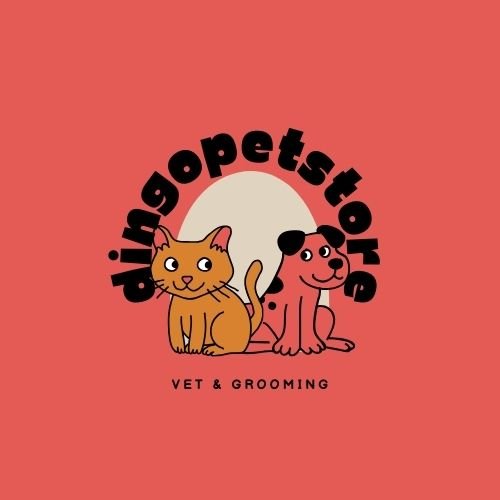Vestibular Disease in Dogs is a sudden disturbance of balance, more common in older dogs, causing symptoms such as head tilt, vomiting, circling, and lack of coordination. This condition can be triggered by factors like ear infections, hypothyroidism, trauma, tumors, or antibiotics.
In most cases, dogs begin to improve within 72 hours, with symptoms improving over a period of 7 to 10 days. Complete recovery usually occurs within 2 to 3 weeks, but some dogs may have residual symptoms. Treatment for vestibular disease in dogs typically involves medical management with antibiotics, corticosteroids, antifungal, or antiepileptic medication, depending on the underlying cause.
Introduction To Vestibular Disease In Dogs
Vestibular disease is a neurological condition that affects dogs, causing a disturbance in their balance and coordination. It is commonly known as “old dog disease” because it often occurs in senior dogs, but it can also affect dogs of any age. This condition affects the vestibular system, which is responsible for maintaining a dog’s sense of balance and spatial orientation.
Definition Of Vestibular Disease
Vestibular disease is a condition that affects the inner ear or the part of the brain that controls balance and coordination. It is characterized by a sudden onset of symptoms such as head tilt, vomiting, circling, nystagmus (involuntary rapid eye movements), ataxia (lack of coordination), dizziness, and reluctance to walk or stand.
Prevalence In Dogs
Vestibular disease is commonly seen in dogs, especially in older dogs. While the exact prevalence is unknown, it is believed to be more common in certain breeds, such as Cocker Spaniels and Beagles. However, it can affect dogs of any breed or mix.
Overview Of Symptoms
The symptoms of vestibular disease in dogs can vary from mild to severe. Common signs include a noticeable head tilt, vomiting, circling in one direction, nystagmus or rapid eye movements, ataxia or lack of coordination, dizziness, and reluctance to walk or stand. It is important to note that these symptoms can also be seen in other conditions, so it is crucial to consult a veterinarian for a proper diagnosis.
- Head tilt
- Vomiting
- Circling
- Nystagmus
- Ataxia
- Lack of coordination
- Dizziness
- Reluctance to walk or stand
If you notice any of these symptoms in your dog, it is recommended to seek veterinary attention as soon as possible. Early diagnosis and proper treatment can help improve your dog’s quality of life and manage the symptoms effectively.
In conclusion, vestibular disease is a neurological condition that affects dogs’ balance and coordination. It is characterized by symptoms such as head tilt, vomiting, circling, nystagmus, ataxia, dizziness, and reluctance to walk or stand. While it commonly affects senior dogs, it can occur in dogs of any age. If you suspect your dog may have vestibular disease, it is important to consult a veterinarian for a proper diagnosis and treatment plan.

Credit: www.mspca.org
Causes And Diagnosis Of Vestibular Disease
Vestibular disease in dogs can be caused by various factors, including ear infections, trauma, tumors, and antibiotic side effects. Diagnosis typically involves identifying symptoms such as head tilt, nystagmus, and lack of coordination, and treatment depends on the underlying cause.
Common Causes Of Vestibular Disease
Vestibular disease in dogs can be caused by various factors, including:- Ear infection
- Perforated eardrum
- Hypothyroidism
- Trauma
- Tumors
- Side effects of certain antibiotics
Diagnostic Procedures
Proper diagnosis is crucial in determining the cause and the appropriate treatment plan for vestibular disease in dogs. To diagnose this condition, veterinarians may perform various diagnostic procedures, including:- Physical examination
- Neurological examination
- Blood tests to check for underlying health issues
- X-rays or CT scans to detect tumors or abnormalities in the brain
- MRI scans for a more detailed evaluation of the brain
- In some cases, cerebrospinal fluid (CSF) analysis may be required
Differentiating Central And Peripheral Vestibular Disease
Differentiating between central and peripheral vestibular disease is essential for proper treatment. Here’s how veterinarians distinguish between the two:| Central Vestibular Disease | Peripheral Vestibular Disease |
|---|---|
| Involves the brain or brainstem | Affects the inner ear or the vestibular nerve |
| Causes may include tumors, infections, or trauma | Causes may include ear infections or inner ear inflammation |
| May show additional neurological signs | Usually presents with only vestibular symptoms |
Treatment And Management Of Vestibular Disease
Vestibular disease in dogs can be a frightening and distressing condition. However, with proper treatment and management, dogs can experience significant improvement in their symptoms and quality of life. There are various medical and surgical options available, with different approaches depending on the underlying cause of the disease. Prognosis and recovery can vary from case to case, but with proper care and treatment, most dogs will make a full recovery.
Medications For Medical Management
When it comes to managing vestibular disease in dogs, medical management plays a vital role. Medications can help alleviate symptoms and speed up the recovery process. Common medications used for treatment include:
- Antibiotics: If an ear infection is causing vestibular disease, antibiotics may be prescribed to clear up the infection.
- Corticosteroids: These anti-inflammatory medications can help reduce swelling and inflammation, which can contribute to vestibular symptoms.
- Antifungal medication: If a fungal infection is the cause, antifungal medication may be necessary to treat the underlying infection.
- Antiepileptic medication: In some cases, antiepileptic medication may be prescribed to control seizures associated with vestibular disease.
Surgical Options
Surgical intervention may be required in certain cases of vestibular disease in dogs. Surgical options are typically considered when there is a structural abnormality or tumor causing the condition. The specific surgical procedure will depend on the location and nature of the underlying issue. Some examples of surgical options for vestibular disease include:
- Tumor removal: If a tumor is identified as the cause of vestibular disease, surgical removal may be necessary to eliminate the tumor and alleviate symptoms.
- Ear surgery: In cases where an ear infection or perforated eardrum is the cause of vestibular disease, surgical intervention may be performed to address the underlying issue and promote healing.
Prognosis And Recovery
The prognosis and recovery for dogs with vestibular disease can vary depending on the underlying cause and overall health of the individual dog. Many dogs show significant improvement within a few days to weeks of treatment. However, some dogs may have residual symptoms such as a head tilt or mild instability, which can persist for life. It’s important to consult with a veterinarian for an accurate assessment of the prognosis and to develop a tailored treatment plan for your dog’s specific needs.

Credit: www.rock-hill.carolinavet.com

Credit: www.facebook.com
Frequently Asked Questions On Vestibular Disease In Dogs
How Do You Treat Vestibular Disease In Dogs?
Treatment for vestibular disease in dogs typically involves medical management with antibiotics, corticosteroids, antifungal, or antiepileptic medication. The specific treatment will depend on the underlying cause of the disease. Improvement can often be seen within 72 hours, with complete recovery usually within 2-3 weeks.
Some dogs may have residual symptoms such as a head tilt or mild balance issues for life. Common causes include ear infection, hypothyroidism, trauma, tumors, or idiopathic factors.
How Long Does Dog Vestibular Last?
Dog vestibular can last for approximately two to three weeks. Improvement typically starts within 72 hours, with the head tilt and stumbling improving over a seven to ten-day period. While most dogs fully recover, some may have residual symptoms like a head tilt or mild unsteadiness for life.
What Triggers A Vestibular Episode In Dogs?
Vestibular episodes in dogs can be triggered by several factors. These include ear infections, trauma, tumors, antibiotics, and idiopathic causes. The symptoms of vestibular disease in dogs may include head tilt, vomiting, circling, lack of coordination, dizziness, and rapid eye movements.
It is important to consult a veterinarian for an accurate diagnosis and appropriate treatment.
What Triggers Vestibular Disorders?
Vestibular disorders can be triggered by various factors including medicines, infections, inner ear problems, calcium debris in the semicircular canals, and brain-related issues like traumatic brain injury. It is also called idiopathic vestibular disease when the cause is unknown.
Conclusion
Vestibular disease in dogs can be a frightening experience for both the pet and the owner. However, with proper diagnosis and treatment, most dogs can make a full recovery within a few weeks. The key is to identify the underlying cause of the disease and administer the appropriate medication or therapy.
Whether it’s an ear infection, trauma, or idiopathic vestibular disease, there are treatment options available to improve the dog’s quality of life. If you notice any symptoms such as head tilt, circling, or lack of coordination in your dog, it’s important to consult with a veterinarian for proper evaluation and care.


